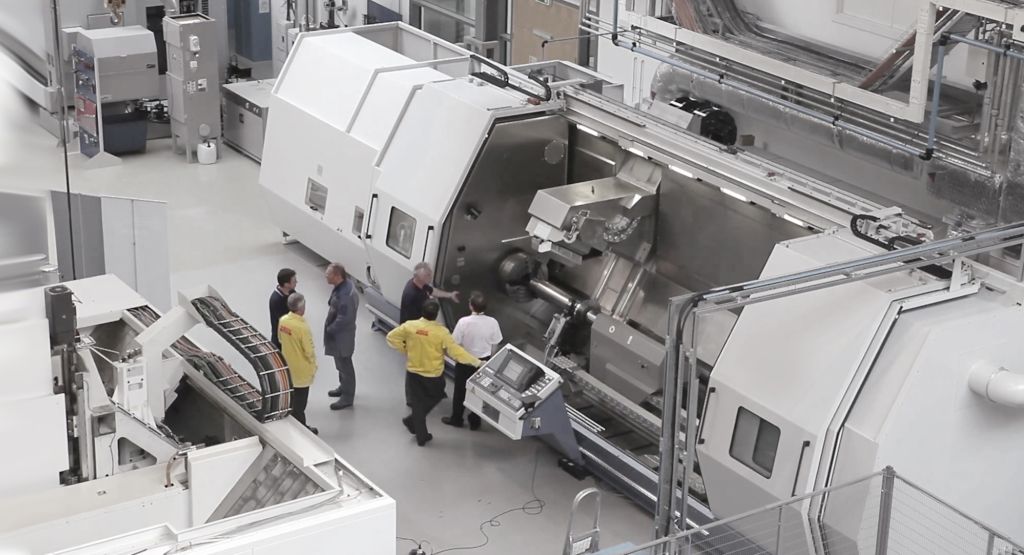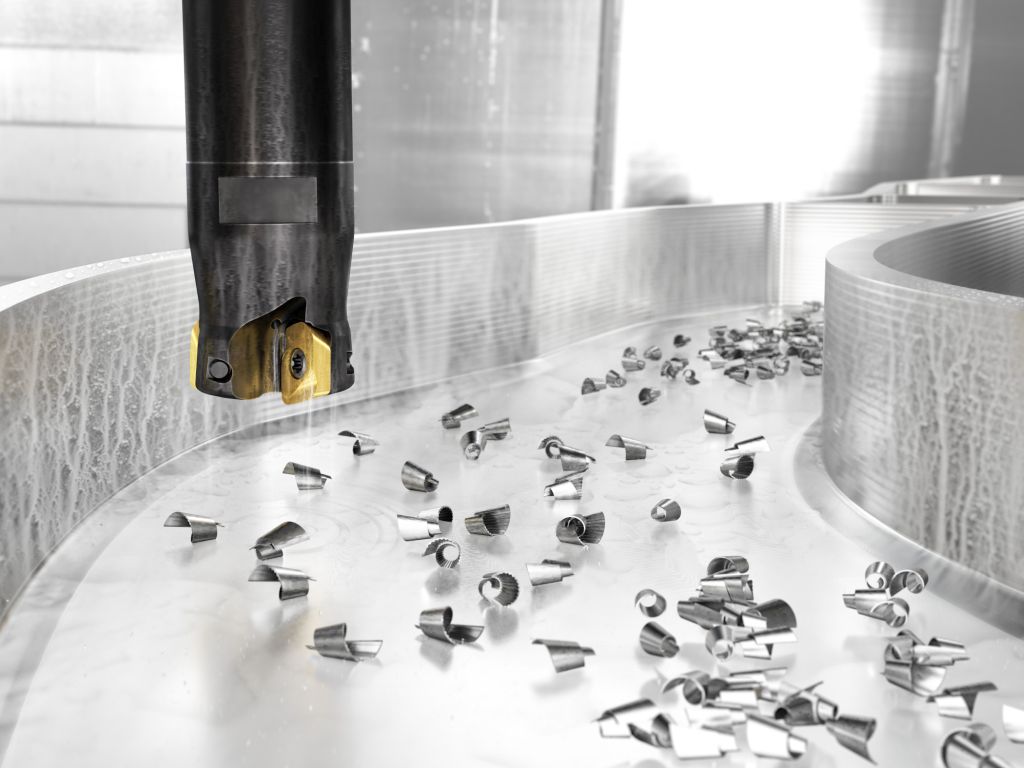Where innovation meets excellence

In a Q&A session, Sandvik Coromant’s industry & tech centre manager – aerospace, Steve Weston casts his eye over an ever-changing cutting tool industry landscape. Aerospace Manufacturing reports.
When it comes to the aerospace sector, Sandvik Coromant has been working with the Advanced Manufacturing Research Centre (AMRC) since 2001, alongside other leading aerospace industry partners. The company has collaborated on many early-stage projects, including material development and productivity improvements, while also considering the environmental impacts.
Sandvik Coromant launches a CoroPak release twice a year, introducing new products to the market that are designed to improve on previous iterations and realise new innovative concepts. They are all focused on helping customers achieve a lower cost-per-part by running faster machining processes that are more productive.

“One of our most recent product launches includes a new turning insert grade, S205, focused on machining heat-resistant super alloys (HRSA) used in aerospace,” begins Weston. “S205 is something of a gamechanger, as it can be run at faster cutting speeds while maintaining superior surface quality, without having detrimental effects on the component’s material integrity. Another recent new product is the CoroMill MH20 high feed milling cutter designed primarily for milling cavities, or pockets, in ISO S, M and P materials. The tool’s innovative insert cutting edge geometry delivers a gradual and light-cutting action to help support vibration-free production in aerospace component manufacturing.
“We are always developing tooling solutions to handle the more exotic current and future aerospace materials and collaborating with companies as they recover from the impact of the pandemic, which have never been more important.”
From chaotic to exotic
In terms of the trends and demands, Weston says there is a continuous drive for reduced cost-per-part and an ever-growing demand for increased circularity and sustainability.
“We’re seeing bigger and more ambitious projects, with a demand for new and more exotic materials. Customers are focused on recovering from the effects of the pandemic and fulfilling order books, while also preparing to build more sustainable aircraft for the future. This will involve the switch to new fuel types, such as sustainable aircraft fuel (SAF) or hydrogen.
“Along with the normal demands for supporting with large projects, there’s an increased demand for digital technologies and Industry 4.0 concepts. Enhanced use of data is also becoming increasingly in demand. Customers are now able to access cutting data built into Sandvik Coromant’s digital offerings to help better inform their tooling choices.”

Asked why specialised cutting tools are needed when cutting aluminium, Weston points out that as the material is soft and ductile, it can often adhere to tools, which leads to a build-up edge on the insert.
“Cutting tools for aluminium should generally be very sharp - possibly even polished, utilise specialist coatings and work at very high surface speeds to prevent the aluminium from adhering. High strength aluminium, such as aluminium lithium, can be abrasive and requires sharp edges and high surface speeds. Dynamic stability is also an important consideration to prevent imbalances and vibrations while machining.
“When drilling aluminium or composites - in components such as airframes or fuselage - tool selection is key. Delamination can occur and carbon fibres can break if incorrect geometries or materials are chosen, so it’s important to choose a drill that can handle both composites, and titanium or aluminium.”
When it comes to the company’s R&D focus and how tool life and consistent performance are being improved over time, Weston points to a constantly-evolving industry.
“There’s so much technology that goes into making cutting tools, and Sandvik Coromant produces large amounts of these while maintaining accuracy and consistency. Our current R&D is continuously focused on new grades, coatings and geometries for improved productivity and customer value. There is also our carbide recycling programme, where we buy-back customers’ worn-out carbide tools, recycle the carbide powder and re-use it to make brand new ones with optimal performance properties.”
One-hit automation
Much is being discussed about improving the automation of the drilling process, with the twin goals of higher volume and lower cost production. What is Weston’s view and does the process still require a lot of hands-on manual intervention?
“There is a definite trend towards drilling with robots and new machine configurations, and this has made huge steps forward. Some processes do still require manual intervention, but automation is the way forward to improve consistency and output, and complete ‘one-hit’ machining applications - particularly when machining metal-composite stacks. This frees up highly-skilled workforces for more complex or interesting tasks.”
It's worth asking what industry changes he would like to see made, such as more standardised material information - similar to that employed on metallics - making composite materials easier to assess what the right tool will be?
“Right now, the standardisation of composites hasn’t reached the same levels of maturity as for metallics, and composites differ more from supplier to supplier. An improvement in the standards for composites would make processes easier, and this is something we are working towards. Another positive change that needs to happen more, is to increase the close collaborations we saw during the pandemic. These worked so effectively and redefined the nature of industry relationships. This would entail moving further towards integration and collaboration with customers, and away from transactional relationships.”
In terms of the kinds of technology developments in the tooling arena, Weston expects to see a lot more digitalisation, including the incorporation of Industry 4.0 concepts and services into current products.
“Sandvik Coromant offers tools that can feed-back live data during the machining process, which helps to predict wear and make tools more intuitive going forward. We predict that tools will also become more self-adaptive, with data collection allowing engineers to make decisions and monitor tool performance remotely and foresee problems or breakages before the customer does.
“We will also anticipate an even greater focus around sustainability, driven by circularity. This includes identifying the carbon footprint of any tool or product end-to-end, for total transparency. This data can also be added to an overall sustainability calculator.”
According to Weston, what really differentiates Sandvik Coromant from the competition is its customer-focused core values: innovation, fair play and a passion to win.
“We want to be the best, and to look for new opportunities for innovation beyond the cutting edge. We listen to our customers and build our business around that. Above all, Sandvik Coromant is a friendly, honest company. Our working culture and team spirit are our strengths, especially in such a globalised environment.”
Protecting your assets
It is always interesting to know what are the most important assets of a company. For example, a defined strategy, its people, its experience, its use of technology, its locations - or a combination of all these points?
“It’s key to have a defined strategy and to ensure all employees are going in the same direction and towards the same goals. After all, people make a business. In terms of experience, we employ a diverse mix of people from all backgrounds who bring skills and experience, not only from their training, but their previous roles. We also encourage our people to gain new experience and take opportunities for new roles within the company to grow their skillset.
“Location is important too, and almost everywhere in the world has a Sandvik Coromant. This combination of assets has made the company a success. Another important factor is staying ahead of the curve. All Sandvik Coromant’s departments are very thorough in the development of our products, ensuring they are the best they can be.”
Finally, has Sandvik Coromant’s longstanding partnerships brought it any tangible benefits, and where to next for the company?
“Our partnerships have brought huge benefits to our business, both from AMRC and our other tech centre collaborations, and from our integrators that work onsite for our larger customers,” Weston concludes. “Understanding our partners and customers’ businesses is fundamental, especially in the aerospace industry. It’s impossible to make a significant impact in a short amount of time, so these longstanding relationships are key in building trust and understanding the unique challenges all of our partners face. People buy from people, so it’s important that they know not only Sandvik Coromant, but us as individuals.
“Looking ahead, I expect to see a lot more activity in terms of digitalisation and additive manufacturing, with the overarching blanket being sustainability. You can’t keep pace with the perfect storm within a normal R&D organisation. Instead, you need to harness the power of everybody inside and outside your organisation. That’s why we plan more acquisitions going forward, as part of a plan to accelerate company growth and internal R&D.
“Over the next 3-5 years, you can expect to see a multitude of significant digital acquisitions across many departments within Sandvik Coromant. In an industry like this, where the market moves so rapidly, acquisitions are a faster and more efficient way to obtain the skills and expertise needed to develop new products, rather than creating new departments from the ground up.”













